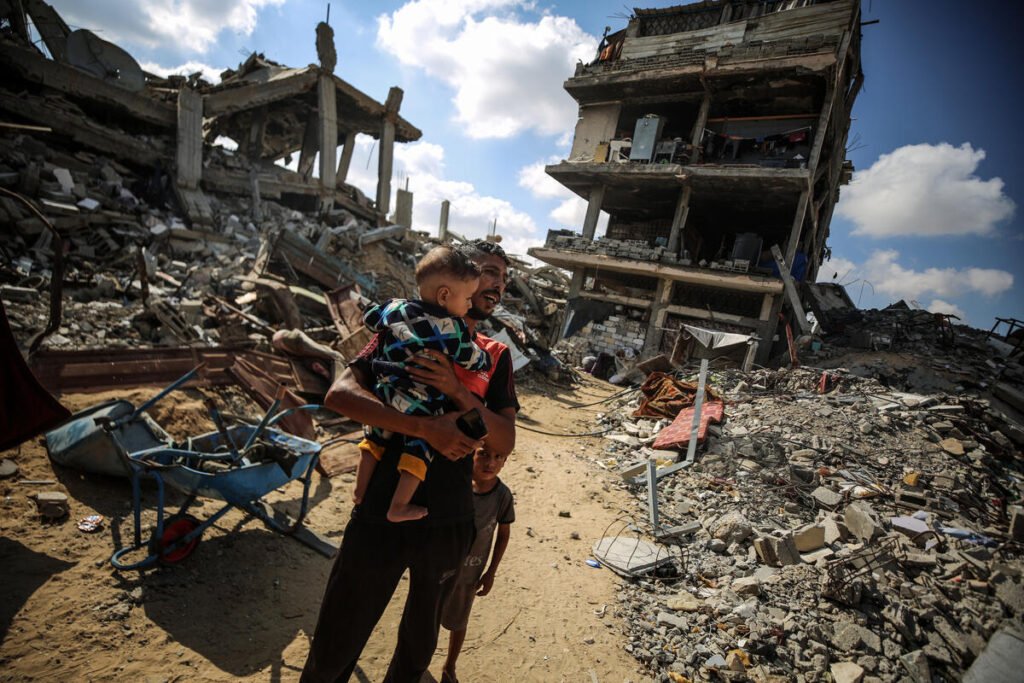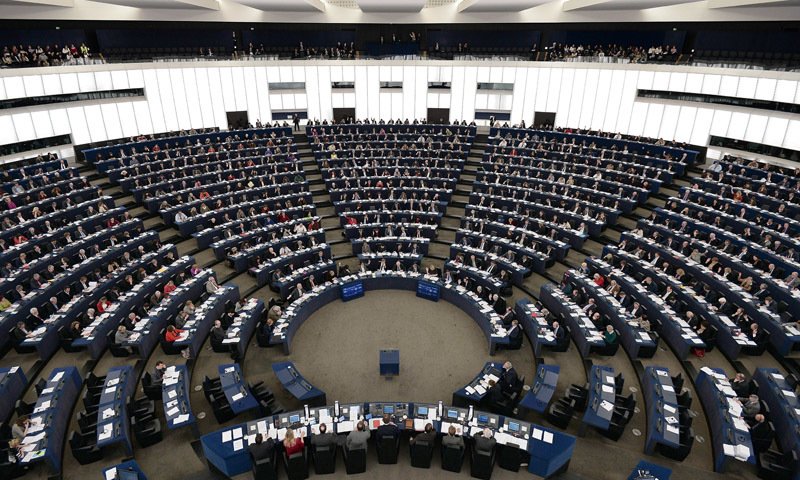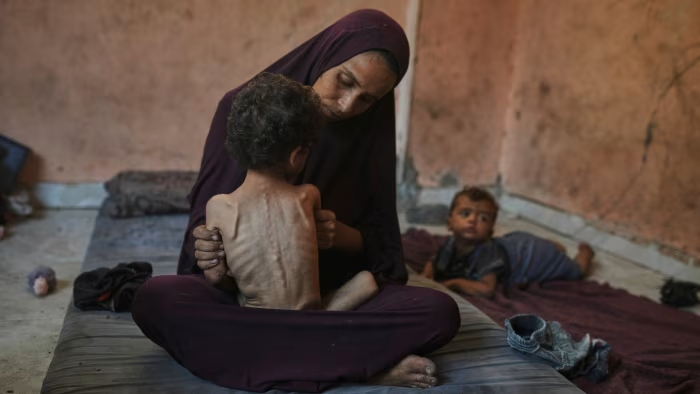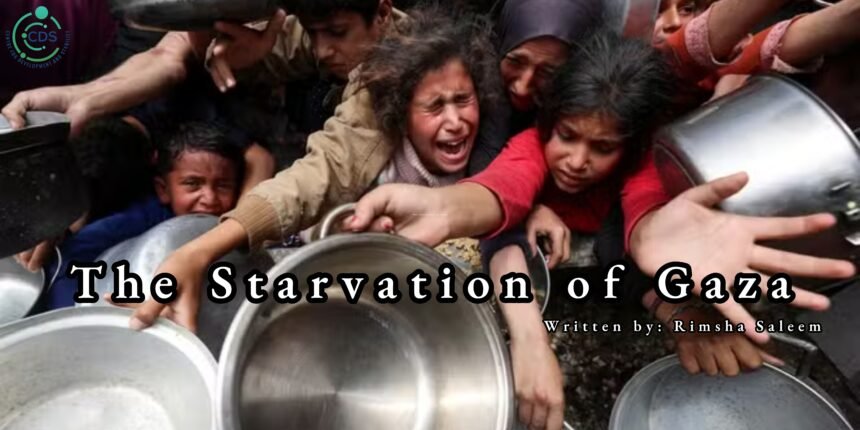It is a startling fact that one of the oldest and most crowded areas on Earth is today regarded as the most hungry in a time of immediate communication, technological advancements, and agricultural abundance. The besieged coastal strip of Gaza, which is home to more than two million Palestinians, is experiencing a man-made disaster where the deteriorating food crisis is not just a result of war but a purposeful weapon employed in a quiet and protracted warfare.
- The author Rimsha Saleem is a skilled writer who creates authentic, impactful content that builds trust and gives organizations a strong, memorable voice.
- *The views and opinions expressed herein, and any references, are those of the author and do not necessarily reflect the editorial policy of the Centre for Development and Stability (CDS).

At this point, the problem has escalated from a humanitarian issue to a complete catastrophe. Northern Gaza has reached Phase 5, or famine, the most serious level of food shortage, according to the Integrated Food Security Phase Classification (IPC). This designation is a warning indicator that millions of people are in imminent danger and that thousands of people are currently starving. According to IPC reports, over 1.1 million people, or more than half of Gaza’s population, are in famine-threatening conditions, and if nothing is done, the situation gets worse every day.
This tragedy was completely preventable, which just adds to its agony. There has been significantly more damage than just jihadist targets since the military campaign started in October 2023. A population’s lifelines, or critical civilian infrastructure, have been methodically destroyed. The devastation of bakeries, farms, water sources, food storage facilities, and relief distribution centres are all included in this. As a result, the landscape has been deliberately devoid of the most fundamental means of living.

There have been significant challenges to relief efforts as well. According to the United Nations Relief and Works Agency (UNRWA), convoys carrying humanitarian aid which are meant to be safeguarded by international law have frequently been attacked, delayed, or halted as they try to enter Gaza. As a result, food a fundamental human right has been successfully used as a weapon of war. There are increasingly disturbing stories of bread being prepared from animal feed or even grass, and families are compelled to make do with whatever they can get. Additionally, there is hardly any access to clean drinking water. Journalists and aid workers have shared horrifying photographs and accounts of malnourished children in hospitals and desperate mothers who had to wait hours for a single loaf of bread. These are not historical accounts of a forgotten famine; this is the grim reality of Gaza today.
Fundamentally, the famine issue is a direct outcome of profound political failure and a flagrant contempt for international law rather than merely a byproduct of military actions. The politicization of aid, the indiscriminate targeting of civilian infrastructure, and the siege all go against accepted humanitarian norms. Starvation of civilians as a means of warfare is expressly forbidden by the Fourth Geneva Convention, yet these rules have continuously been broken. Despite declarations of concern from a few world leaders, no tangible action has been taken, and the suffering has not stopped.

The obvious inconsistency in the response of the international community is the most concerning feature of this issue. Humanitarian corridors and ceasefires are swiftly negotiated to safeguard civilians in other crisis areas. However, these fundamental safeguards are either completely rejected or politicized in Gaza. This selective compassion implies that certain lives are considered more deserving of protection than others, which is a troubling double standard. In addition to being victims of war, the people of Gaza have also suffered from a great deal of international indifference.
The media has a significant impact on whether this indifference is questioned or strengthened. News coverage is the only way for many individuals outside the area to learn about what is happening in Gaza. That coverage separates the audience from the enormous human cost when it is partial, biased, or emotionally detached. In addition to being informative, truthful, compassionate, and inclusive storytelling is crucial for arousing consciousness and fostering international unity. Beyond the startling data and stories, there is a more underlying reality: this catastrophe is about more than just malnutrition; it is about the denial of human dignity. Food stands for stability, security, and the basic right to hope in life. Denying this to an entire population is a form of violence that goes far beyond the battlefield. A starving child in Gaza feels the same pain and deserves the same compassion as any child anywhere in the world.

As this humanitarian emergency deepens, the responsibility to act grows heavier. It is not only the warring parties that must be held accountable, but also the global institutions, governments, and individuals who have the power to demand change. Immediate and unrestricted access to aid, the restoration of essential services, and a permanent ceasefire are not acts of charity; they are moral obligations rooted in human decency and international law.
Gaza’s food crisis is not an unfortunate side effect of conflict; it is a deliberate and systemic outcome of a prolonged blockade, relentless violence, and global inaction. The world has failed the people of Gaza by allowing this level of suffering to persist. But failure does not have to be final. There is still an opportunity to reclaim our shared humanity, to push for peace, and to ensure that never again will an entire population be left to starve under siege.



